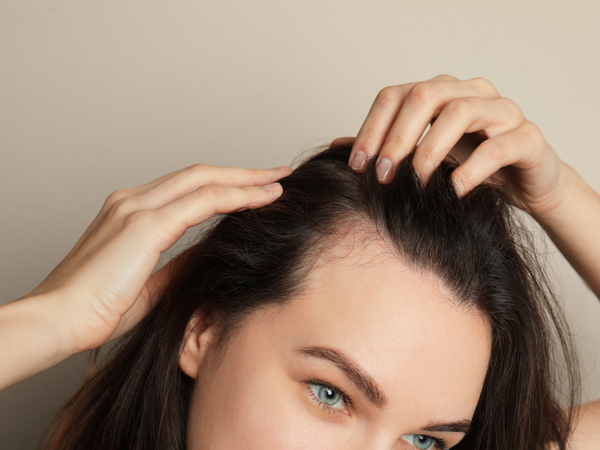Caring For Dreadlocks – Protecting Your Hygiene, Strength And Shine

If you have taken the time and effort to grow your dreadlocks over the years, it stands to reason that caring and maintaining them is important to you.
With that in mind, many of you choose It’s Pure, not just for our Henna, which is a great way to colour your ‘locs’, but for our certified organic hair care options like indigo and amla.
The key questions we tend to get when caring for dreadlocks, especially long locs, are around three areas:
- Hygiene
- Shine
- Shape
In this article, we’ll be exploring the cleaning, maintaining and caring for dreadlocks, to keep yours in great shape.
Caring For Dreadlocks: Cleaning your dreadlocks
There are lots of myths about dreadlocks not being washed, or being dirty, but these are untrue. Not least because in damp climates there’s a real risk of growing mould on your locs, most people with dreadlocks take a lot of time to care for their hair.
The use of shampoo on locs is relatively controversial. When your locs are relatively young, shampooing is a real concern. It can lead to disrupting the shape and bonds on the locs, so it’s advised to be very careful.
If your locs aren’t particularly well established, make sure to tie your roots and any loose ends as using a detergent will break the hair bonds apart with little trouble. If you are going to use a shampoo it’s vital to make sure it is super gentle and free from:
- SleS (sulfates, or super harsh detergents)
- Parabens (preservatives that leave residue on locs)
- Silicones (ingredients for shine which again, leave residue on hair that increases ‘slip’ – not good for loc binds at all)
If you are going for a shampoo, look for a free from choice, which supports scalp health and is free from harsh chemicals.
With longer locs, which have usually been around for at least two to three years, it’s easier to wash through something like a pair of old tights or a muslin wrapped around the locs. This avoids disrupting the bonds.
Many locs owners, especially those with lots of hair, prefer to switch to the ‘no poo’ (no shampoo) method of hair care.
Hair is self-cleaning and this can be a good option. It doesn’t smell and helps the locs bond faster. If you need to cleanse, Shikakai, a fruit based natural cleanser can be worked through the scalp and gently rinsed.
The point is to leave it a little bit between the washes so at first you may find your scalp a little oily. It takes about two weeks to rebalance but once it settles, your hair will more than care for itself.
PRO TIP: No matter how you cleanse your locs, it is vital to take time to dry them thoroughly, especially in winter and colder climates. If there is any moisture left in the middle, mould will form on the loc which can mean it has to be cut.
Caring For Dreadlocks: Conditioning and Shining Your Locs
When choosing to add softness and shine to your dreadlocks, we always recommend the ayurvedic approach to haircare. The longer your loc, the more you increase the likelihood of breakage and hair fall. Using Ayurvedic treatments when caring for dreadlocks will make them feel and look good, from the inside out.
Our certified organic Amla is the perfect choice.
Amla (from the Indian Gooseberry) has been long revered by locs wearers for it’s:
- Antifungal properties (perfect for hygiene)
- Scalp health benefits, especially if your scalp is sensitive or prone to soreness and flaking.
- Hair nourishing benefits that support hair strength and reduce breakage.
You might also want to colour your locs. There’s been huge debate around this topic, but if you are going to dye your hair, provided you’re careful, Henna and Indigo are your best bets.
Historically Henna has been thought to be drying, which is largely untrue, especially if you pair it with at least a quarter of amla in the mix to add condition but it is critical to do a strand test if you have fragile longer locs which are much more likely to break.
Our guide to dying your dreadlocks without breakage gives a full step by step guide to colouring safely.
If you want to add additional shine to your locs you can use hair oil.
Even if you keep your locs tight, and protected they can be prone to breakage and frizzing, so a hair oil is a great option to add not just shine, but condition without risking the loc structure.
It’s also important for the scalp to use oil occasionally. The weight of longer locs especially can put a lot of strain on the scalp and it’s important to account for this in your hair care regime.
Looking after your scalp care prevents itching, thinning, breakage and hair loss when caring for dreadlocks.
Most experts around caring for dreadlocks suggest either castor oil or argan oil for loc maintenance. Both help to encourage growth, strength and shine.
Our Pure Argan oil is rich in fatty acids, sustainably sourced and certified organic. It’s important to check the ingredients list as many high street ranges contain cheaper filler ingredients or additives that can be damaging.
If you have any more questions, ask our experts here >>>



